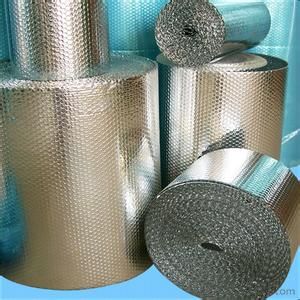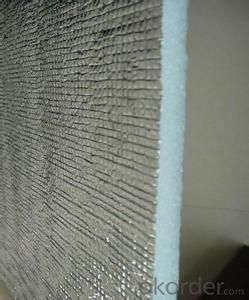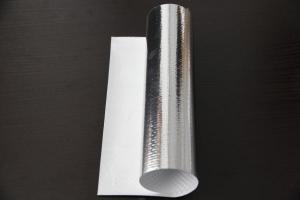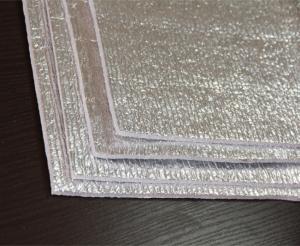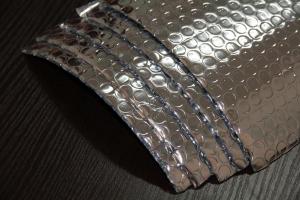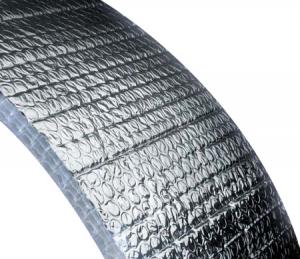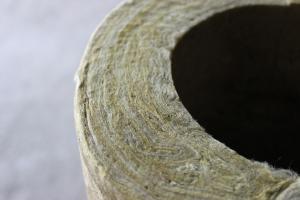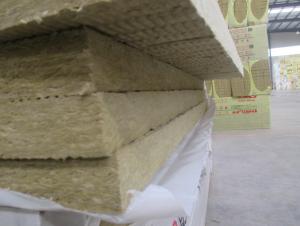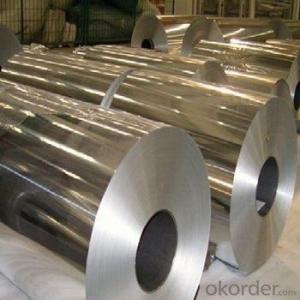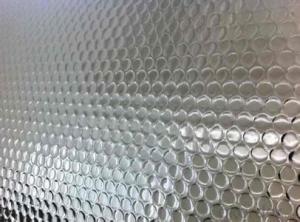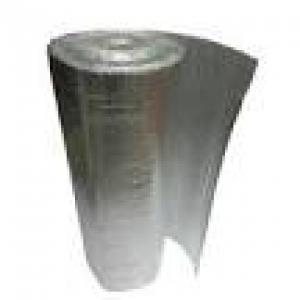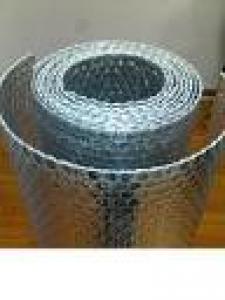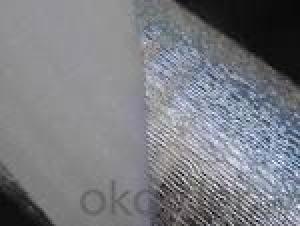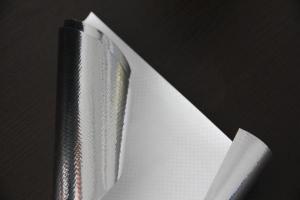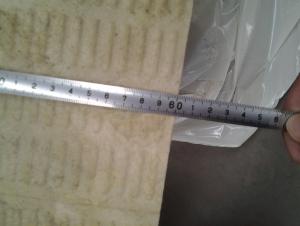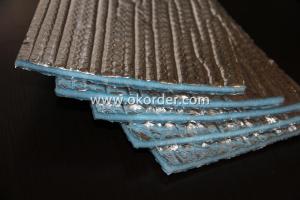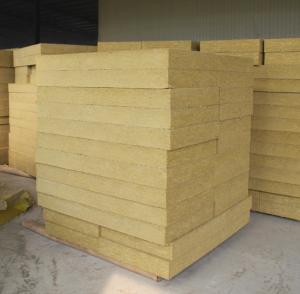Roofing Insulation Material - Aluminum Foil Coated Bubble Insulation Type 3
- Loading Port:
- Shanghai
- Payment Terms:
- TT OR LC
- Min Order Qty:
- 10000 m²
- Supply Capability:
- 100000 m²/month
OKorder Service Pledge
OKorder Financial Service
You Might Also Like
Bubble Insulation Benefits:
Reflects 96% of radiant heat
Non-toxic / Non-carcinogenic
Does not require protective clothing or respirators to install
Durable and lightweight
Does not compress, collapse or disintegrate
Vapor and radon retarder
Easy to cut and install
Permanent and maintenance-free
Does not provide a growth medium or nutritive value for fungus, insects, or rodents
Does not support the growth of mold or mildew
Not affected by moisture or humidity
Lowers heating and cooling costs year round
Bubble Foil Application:
Metal & Steel Buildings
Homes
Roof Underlayments
Cathedral Ceilings
Crawl Spaces
Hot Water Heaters
Basement Walls
Floors
Garage Doors
Concrete slabs
Driveway snow melts
Pole barns
Post frame buildings
Poultry barns
Animal kennels
Temperature sensitive storage areas
Air Bubble Foil Insulation Tech Data:
Material Structure: AL/Bubble/AL | ||
Bubble Size:D10mm*H 4mm(10*2.5/10*4/10*6/20*7/25*10)choose the bubble size | ||
Bubble Weight:0.13kg/m2 ( can be customized ) | ||
Roll Width:1.2m (lenth can be customized) | ||
PROPERTIES | TEST DATA | UNIT |
Thickness | 3.5-4 | mm |
Weight | 250 | g/m2 |
Emissivity | 0.03-0.04 | COEF |
Thermal conductivity | 0.034 | w/m0 |
Apparent Density | 85 | kg/m3 |
Reflectivity | 95-96 | % |
Water Vapour Transmission | 0.013 | g/m2kpa |
Corrosion | doesn't generate | |
Tensile Strength(MD) | 16.98 | Mpa |
Tensile Strength(TD) | 16.5 | Mpa |
- Q: I know you're not supposed to directly insulate the roof due to the roof getting super heated in the summer, but my walk-in (actually, more like "crawl in") attic is very hot in the summer and very cold in the winter. Is there anything I can do to improve efficiency? I can't help but think I'm wasting a lot of energy just to keep my roof lasting a little longer.
- The reason you do not put insulation directly on the underside of your roof is all about moisture and mold. You need an air gap between the roof and the insulation and allow it to breath. This prevents moisture from condensation that can cause big problems. You could install a radiant barrier that reflects the heat. Do a google search to learn more about it. You could install and attic fan to suck the hot air out in the summer. Most important is to make sure the insulation on the attic floor is the proper thickness.
- Q: I'm thinking of converting my brick walled corrugated iron shed into a changing room for winter hot tub use. I was advised by a friend that the first thing i should do is insulate the roof using glass fibre insulation (the yellow fluffy stuff in the loft) and a simple Plywood ceiling but im not sure how i would stick it to the existing roof (dimensions 170cm x 147cm). So..... how should i insulate the roof of my future changing room????
- If the roof has joists, which I imagine it would, you would put the bats of insulation into those spaces... these can then be stapled into place or if that isn't possible, you can run a wire between the joists to hold the bats in place. If using faced insulation be sure to put the paper side towards the warm area (inside) to prevent condensation.
- Q: I live in central florida. I plan on installing R-30 insulation to the floor of my attic. How effective is it to install reflective insulation to the attic on the roof side? Is it worth the price?
- the best floor insulation is the two on the roof or the 1st floor ceiling, (floor of the attic), no longer the two. If that is already on the ceiling, the attic is vented to the exterior, and insulating the roof could make little or no distinction. Laying one extra 'blanket on the floor is a thank you to bypass in case you prefer to enhance. Insulating a roof will boost the summer season temperature of the roofing, and could adversely result the life of a few components.
- Q: i am going to insulate my conservatory roof its poly carbon and dirt has got inside so cant clean what can i use its a semi flat roof i thought about using insulation board silver backed your comments will be gratefull
- I prefer the roofing inserts, but they dont offer as much insulation as the covering types, the best option if possible is to replace it with a good glass type roof though
- Q: Like how does it get put in your roof?I am doing this energy efficient house.Other Questions:What is an Eave?Whats the roof on top of a patio called?What does orientation mean?What are the good things about French doors?
- go into your attic and pull the insulation out from around the vents that you have the problem with. Then take some standard insulation and fill in around the vents.
- Q: Our end unit 1940"s row house has an old leaking bitumen roof . The water entry point can not be found so a replacement seems the way to go. A roofer suggested a replacement using Firestone 180, 1/2 inch fiberboard insulation covered with fiberglass base sheet, bitumen for flashing and fibered aluminum coating on wall coping . It's all Greek to be but fiberboard insulation and flashing material ? Should I be concerned?
- We use kingspan insulation, marine grade plyboard , 3/4 inch, and yes you can use bitumen as flashing. I hope i am not being condescending, but the flashing is the bit that goes from the roof and a little way up the wall and is then "pointed" into the bricks, thus forming a water-proof barrier.
- Q: A roofer who wants to put a new roof on my mobile home says it will dry out. (We live in the rainiest part of the US)
- It shouldn't need replacement unless it is damaged someway.Like mold,dry rot or UV Damage.He should be willing to explain why and show you the condition of the roof before and after he works on it.
- Q: Without loft insulation ,the roof space is full of air.Why does this not keep the heat in?
- Because air can circulate, (it's called convection) and transfer a lot of heat. In other words, air alone is a very poor insulator. .
- Q: I've found lots of building forums and general "building advice" columns that go over very high-level pros/cons to choosing roofing material and insulation options, but I want a site where I can see hard costs of ordering each of the materials so I don't have to call up a ton of contractors or dealers. Does such a comparison site exist? Everyone offers quotes, but that takes too much time to apply for quotes to every dealer.I'm specifically interested in knowing what green options I can afford (cotton batting vs. formaldehyde-free fiberglass, etc.).
- You could call ABC supply or Norandex Reynolds, they are the biggest distributors I know of. They may have some resources for you.
- Q: What is the difference between roof and loft insulations?
- Potentially that the roof itself is insulated on the underside. A loft insulation could be that the base or floor of the loft/ attic is insulated. Otherwise, I'm not sure.
Send your message to us
Roofing Insulation Material - Aluminum Foil Coated Bubble Insulation Type 3
- Loading Port:
- Shanghai
- Payment Terms:
- TT OR LC
- Min Order Qty:
- 10000 m²
- Supply Capability:
- 100000 m²/month
OKorder Service Pledge
OKorder Financial Service
Similar products
Hot products
Hot Searches
Related keywords



